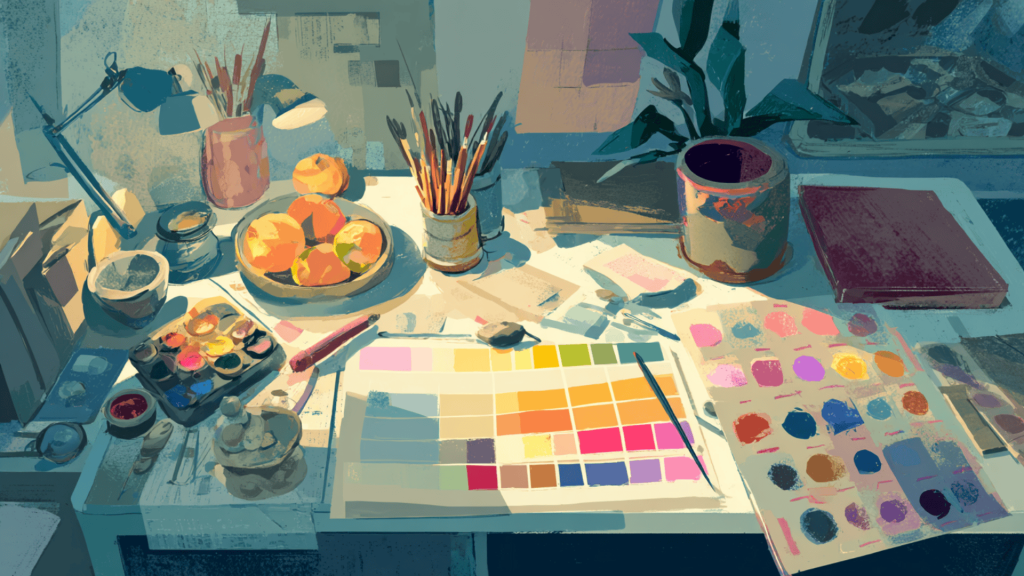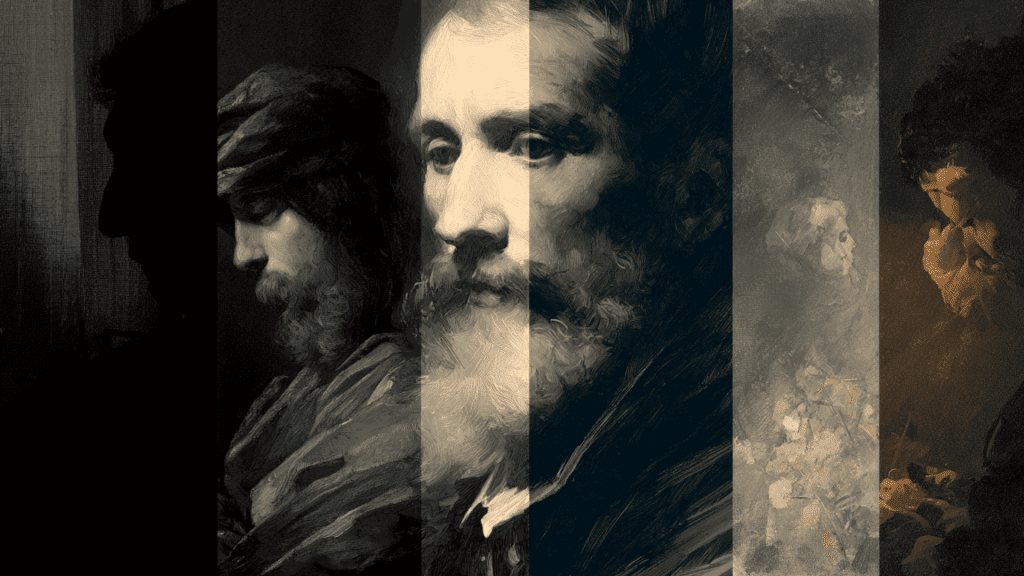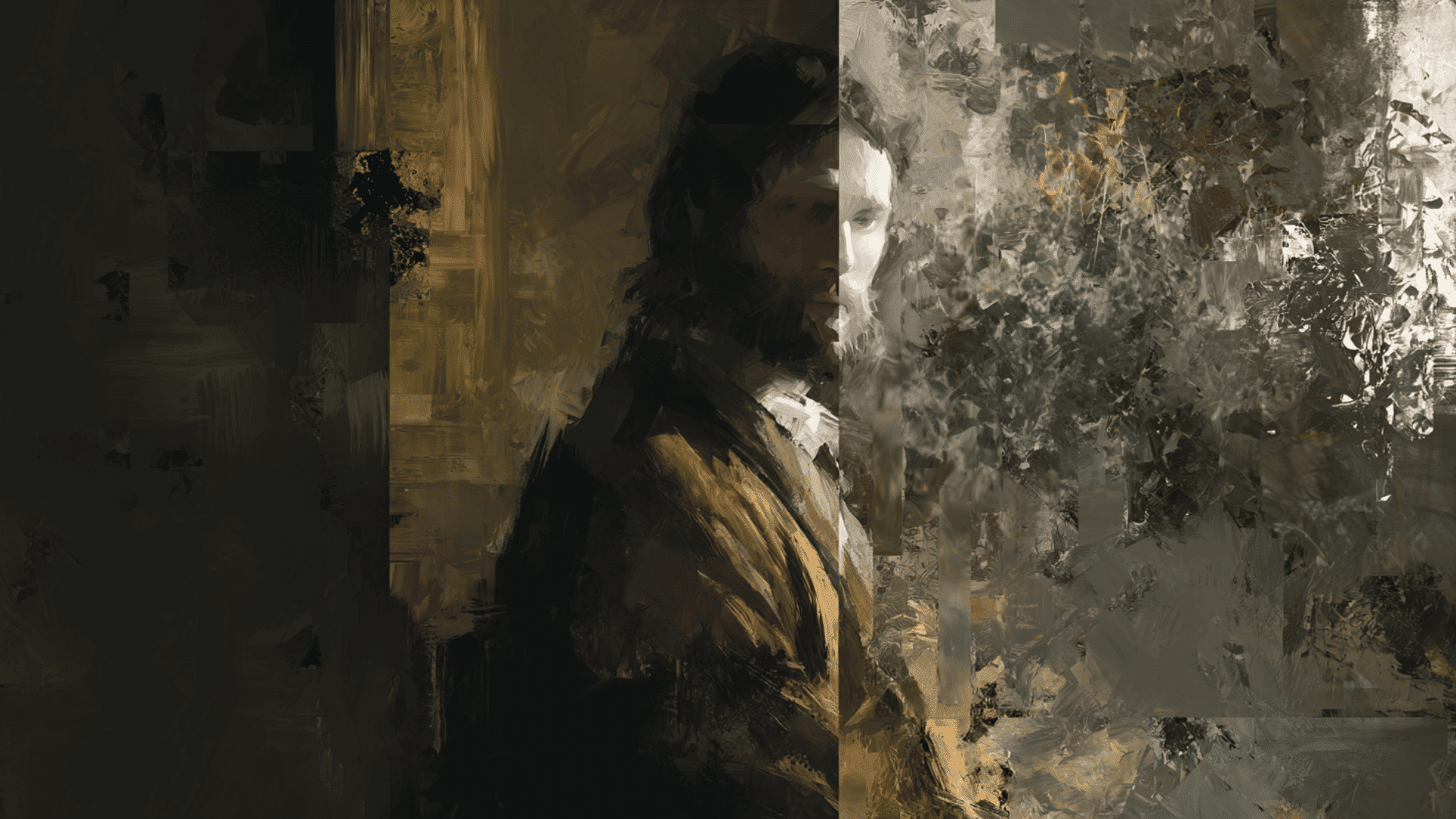Picture yourself standing in front of a painting that looks so real you want to reach out and touch it!
The secret behind this special effect lies in something called “value”- one of the most powerful tools artists use to bring their creations to life.
Value art refers to the representation of light or dark in a painting or drawing, ranging from bright white snow to deep black shadows and everything in between.
Artists are like magicians who use these light and dark areas to create incredible illusions that fool our eyes and touch our hearts.
When you look at famous paintings, you’ll notice countless value in art examples all around you – from the glowing highlights on a person’s face to the mysterious shadows in a dark forest.
Understanding value helps you see art in a completely new light, making every museum visit and art class more exciting and meaningful than ever before.
What is ‘Value’ in the Context of Art?
Value in art refers to the perception of how light or dark something appears in a painting or drawing. Think of it like a scale from pure white to pitch black, with all the gray shades in between.
Artists use value to make their artwork come alive by creating contrast – putting light areas next to dark ones makes things pop out and grab your attention.
Value also helps create depth, making some objects look closer and others farther away.
Dark shadows can make a painting feel mysterious or dramatic, while bright highlights can make it feel happy and energetic. Without value, art would look flat and dull!
Value in Art Examples
Let’s look at some fantastic examples of how artists use light and dark to create magic!
Leonardo da Vinci’s “Mona Lisa” employs soft shadows around her enigmatic smile to illuminate her face. The dark background makes her seem to stand out right from the painting!
Rembrandt was renowned for his dramatic use of lighting. In his self-portraits, bright light falls on one side of his face, while deep shadows cover the other, making him appear powerful and mysterious.
Ansel Adams took black-and-white photos of mountains and valleys. He used bright whites for snowy peaks and deep blacks for shadowy valleys, creating pictures that look almost magical.
These artists prove that value brings art to life!
The Importance of Value in Art Creation

Value is one of the most potent tools artists use to bring their artwork to life! Think of value as how light or dark something appears, from bright white to deep black and everything in between.
Artists cleverly use these light and dark areas to make objects appear three-dimensional, as if they’re popping right off the page.
When you look at a painting, your eyes naturally go to the brightest or darkest spots first – that’s how artists create focal points to grab your attention.
Dark shadows can make you feel mysterious or scared, while bright highlights might make you feel happy and energetic.
By mastering value, artists can change flat drawings into realistic masterpieces that tell charming stories and evoke emotions simply by looking at them.
Value in Art Appreciation: What It Means for Viewers
When artists use different shades, they can evoke a range of emotions in us, from happiness to sadness and even fear. Let’s explore how the contrast between light and dark affects what we see and feel.
- Mood Creation – Dark shadows make scary or sad feelings, while bright lights create happy emotions
- Focus Direction – Artists use bright spots to make our eyes look at important parts first
- Depth Feeling – Light and dark tricks make flat paintings look three-dimensional and real
- Storytelling – Value changes help show time passing, such as scenes that transition from dawn to night.
- Style Recognition – Different art periods use unique light-dark patterns that we can easily identify
Understanding how artists use light and dark helps us appreciate art more deeply and feel a greater connection to it.
Key Terms Related to Value in Art

Learning about value in art becomes much easier when you know these important words!
Value is simply how light or dark something looks in a painting or drawing. The light source is where the light comes from, like the sun or a lamp, which creates all those cool shadows and bright spots.
A value scale is like a ruler that shows you all the different shades from white to black – artists use this to make sure their artwork has enough variety to look realistic and exciting.
Tints are the lighter colors you get when you mix white paint with any color, making everything look brighter and more cheerful!
The Role of Value in Different Art Movements

Value in art means how light or dark something looks. Artists have utilized this tool in various ways throughout history to create stunning effects.
1. During the Renaissance
Renaissance painters, such as Leonardo da Vinci, employed strong light-dark contrasts to render their subjects realistic and three-dimensional, thereby bringing their paintings to life.
They mastered the art of chiaroscuro, using dramatic shadows and bright highlights to create depth. These techniques made flat paintings look so real that people felt they could reach out and touch the subjects.
2. Impressionist Artists
Impressionist artists, such as Monet, broke the rules by using softer value changes. They painted quickly outdoors, capturing how light changed throughout the day on flowers, buildings, and water.
Instead of using harsh contrasts, they focused on subtle shifts in light and shadow to show different times of day and weather conditions.
3. Modern Artists
Modern artists went even further, sometimes using only black and white or extreme contrasts to show emotions and ideas rather than realistic scenes.
They used value as a way to express feelings and abstract concepts, often creating bold, striking images. Today’s artists blend old and new techniques, utilizing value in innovative ways that surprise viewers and challenge expectations of what art can be.
How to Identify and Evaluate Value in Art
Learning to spot valuable art is like being a detective – you need to look for special clues that indicate if something is worth keeping or buying.
| Value Factor | Quick Check |
|---|---|
| Famous Artist | Search the artist’s name online – big names = big money |
| Historical Importance | Was it made during a necessary time in history? |
| Quality of Work | Are the colors bright? Lines clean? Details professional? |
| Condition | Are there any tears, fading, or damage? |
| Rarity | Is this one of only a few in the world? |
| Authenticity | Does it have papers proving it’s real? |
Understanding art value helps you make wise choices if you’re buying, selling, or just curious about what’s hanging on your wall. Remember, even if art isn’t worth millions, it can still be priceless to you because you love it!
Note: Art value can change over time. What’s not popular today might be famous tomorrow, so always get expert advice before making big decisions about buying or selling art.
Wrapping It Up
Value is the magic ingredient that brings art to life! From shadows in Leonardo da Vinci’s masterpieces to highlights in modern paintings, understanding the interplay of light and dark helps us appreciate art in new ways.
If you’re creating your own artwork or visiting a museum, paying attention to value will open your eyes to the incredible skill and creativity artists use.
Every painting tells a story through its shadows and highlights, and now you have the secret code to read these visual stories.
So grab some pencils and paper, or visit your local art gallery with fresh eyes. Begin to notice how artists use value to create mood, depth, and emotion in their work.
What’s your favorite painting, and how does it use light and dark to tell its story? Tell us in the comments below!


